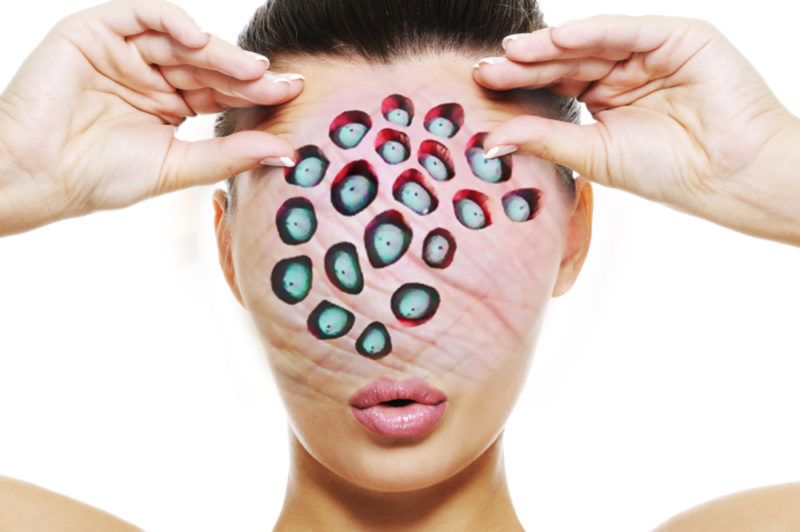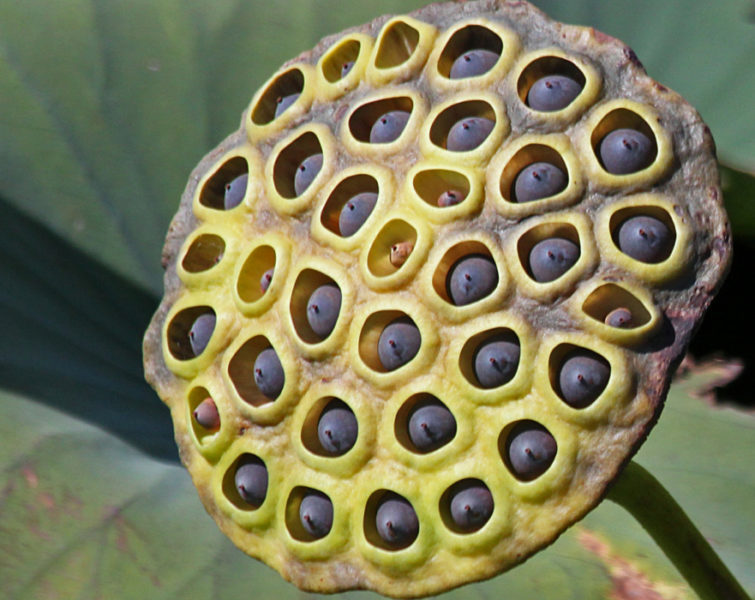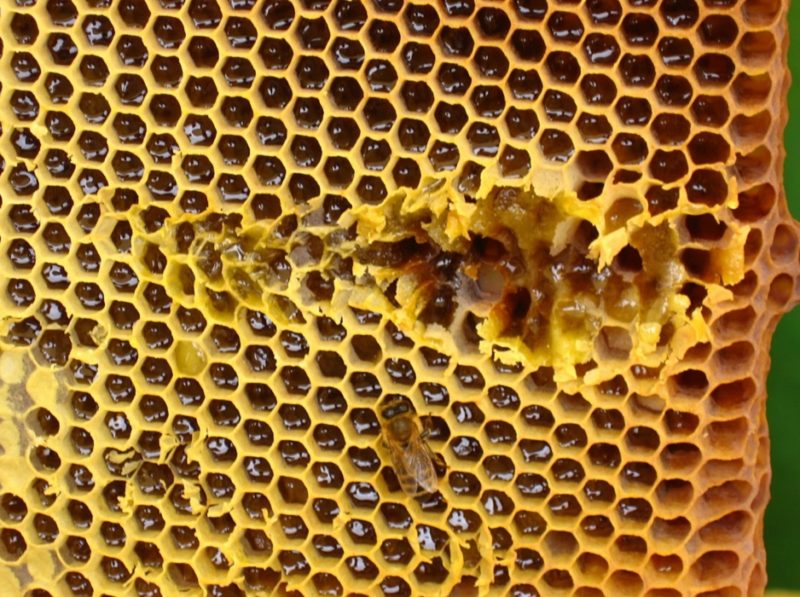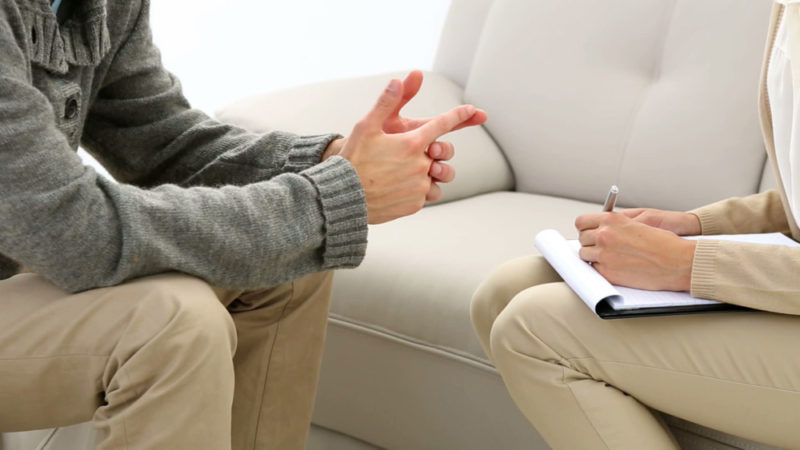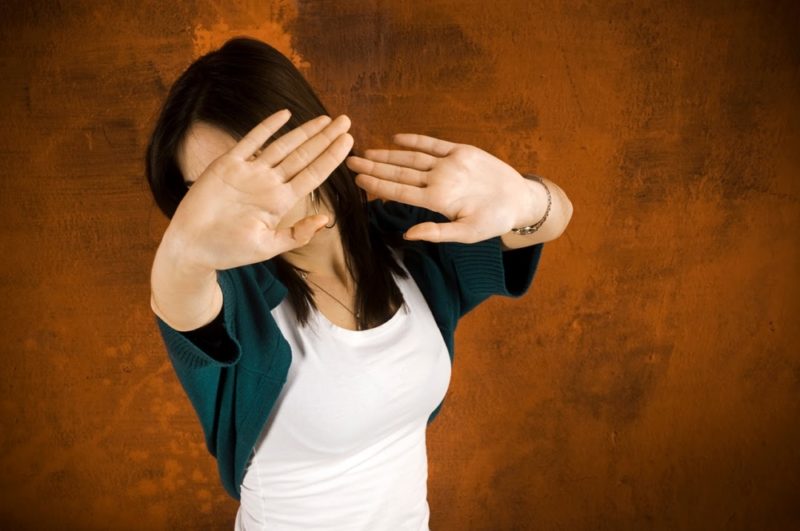Some people suffer from various phobias that make them fear a thunderstorm, crowds, open spaces, heights, or darkness. But how to explain the fear of small holes located next to each other? We will find out if tripophobia really exists, and why it arises.
Material Content:
What is tripophobia
The disease is interpreted as a fear of cluster holes.
They can be located on any surface:
- the skin;
- household items;
- tree trunks;
- flowers;
- products.
Similar holes can be found in dough, bread, rocks, chicken skin, meat, in a shower head and paintings. These are tunnels dug by insects and spongy algae.
The term was created in 2004 and came from the words “drilling”, “fear”. The pioneer was the English scientist Jeff Cole. Together with other like-minded people, he developed a test that was demonstrated to volunteers. In total there were more than 120 images with various holes and holes. It turned out that about 20 percent of the participants in the experiment are prone to tripophobia, as well as the scientist himself.
Traditional medicine does not recognize this disease. Although many people from different parts of the planet claim that they are afraid of holes and cannot use sponges for washing dishes, washcloths. These patients are scared of enlarged pores on the skin and bee honeycombs. On their table there will never be cheese with holes, pastries from yeast dough and porous chocolate.
Tripophobia - a disease or fiction?
It’s hard to say for sure if the fear of holes actually exists.An ambiguous disease is called into question. Some psychiatrists are convinced that tripophobia is understandable, like disgust at the sight of blackheads on the face, fear of bee honeycombs, etc. A sign of a mental disorder is the inability to control oneself at the sight of chocolate or washcloth.
Recent studies have shown that fear of holes is more an extreme degree of disgust than the phobia itself. It manifests itself as a protective reaction to a possible infection site. Initially, it was supposed to protect us in the wild, and an overdeveloped imagination of individuals makes us panic at the sight of tripophobic paintings when there is no danger.
What does it come from
The causes of tripophobia are quite diverse. Usually the disease is due to heredity or mental disorders. Thanks to studies, it was found that anxiety and panic before a congestion of holes caused disgust. Only sometimes the brain connects what is seen with danger. The patient associates repeated holes with skin pathologies, poisonous animals.
Some scientists believe that phobia is formed from the times of our origin. In the distant past, people were afraid of all the unknown. That is why our ancestors managed to survive and evolve.
Not so long ago it was found that a special department of the brain, which is a cluster of holes, is responsible for emotional production. In some patients, it is highly developed, and this is the reason for this reaction.
Some scientists believe that the most significant reason for the development of the disorder is the fear of dermatological diseases. Current trends are pushing people to achieve an ideal appearance. The aesthetic patterns of an individual are an indispensable attribute for becoming in society.
Insecurity in oneself and one’s appearance, complexes imposed from childhood, can give rise to a negative attitude towards oneself. Thus, tripophobes begin to "try on" various skin pathologies - rosacea, ulcers, etc.
How does the fear of holes develop
In some cases, childhood trauma sharply manifests itself in adulthood.
The following factors influence this:
- bad experience;
- relationships within the family;
- conflicts with loved ones;
- constant stress.
It happens that an image on the Internet or a frame from a movie evokes previously experienced emotions. This is due to the fact that human fears tend to accumulate in the subconscious. In any case, the start for the development of tripophobia are various circumstances that can injure the psyche.
Symptoms
Depending on the emotional experiences of the individual, the phobia manifests itself in its own way.
It usually has the following symptoms:
- trembling hands and feet;
- itchy skin;
- panic;
- heart rate
- nervousness;
- heavy sweating;
- increase in temperature indicators;
- dizziness;
- feeling of nausea;
- headache;
- loss of orientation in space;
- pallor of the skin;
- a lump in the throat;
- compression in the chest;
- loss of attention.
Touching the holes may cause a faint.
The patient often behaves inappropriately:
- cannot look away from an unpleasant subject;
- itches or brushes off non-existent insects;
- feels a threat emanating from holes;
- cannot pick up objects;
- does not remember where he is;
- fantasizes about what is in the holes.
Today the Internet “walks” the myth that tripophobia causes the appearance of holes on the skin of a person, which seem to decompose it. Various pictures and photos prove this. Do not believe in such a fraud, someone just scares the public thanks to Photoshop tools.
Fear of congestion of holes is only a psychological pathology that does not manifest itself on human skin. The maximum that may bother him is a nervous itch.
Typically, to detect a disease, a method of demonstrating images is used, where various holes are drawn on the body, objects, plants. Today on the pages of the World Wide Web you can take free tests to help determine the presence of an ailment. Diagnostics takes only a couple of minutes.
How to get rid of fear
Many patients with tripophobia want to get rid of this condition.
To do this, they should contact a therapist who uses the following methods of treatment:
- Drug therapy. This includes sedative medications, antihistamines. They help reduce the symptoms of the disorder.
- Group and individual psychotherapy sessions. The specialist’s job is to enable the patient to feel the difference between danger and tranquility, to realize the nature of their fear.
- Breathing exercises. They teach relaxation and help reduce irritability.
Such therapy is aimed at restoring an adequate state of a person at the sight of an irritant. In rare cases, stationary monitoring is required.
It’s almost impossible to deal with the disorder yourself. The disease develops against the background of the subconscious, and most patients are not able to control it. However, home-based measures will be an excellent complement to comprehensive treatment and a great option to eliminate mild and controlled anxiety.
The patient himself can use relaxation, meditation and various situational training. Experts advise carrying water and ammonia with you in case of uncomfortable sensations.
Possible consequences
The fear of numerous holes does not threaten human health and life. However, over time, tripophobia can become a big problem. At the wrong time, the patient’s head will begin to hurt, muscle tone will increase. Over time, the disease provokes a violation of the functions of the motor apparatus. Lack of timely assistance can lead to death due to asphyxiation.
The disorder leads to various mental disorders:
- depressed state;
- sociophobia;
- unwillingness to leave home.
Unconscious and uncontrolled phobia, manifested in fear of holes in the surrounding objects, is considered a great obstacle to a normal life. It causes not only ridicule of colleagues and friends, but also hostility on their part. The patient stops walking in crowded places, going on vacation at sea. He practically ceases to live normally and constantly thinks about his problem.
That is why it is important to use competent treatment, ask for support from loved ones. Each patient requires an individual approach.
Despite the fact that the diagnosis of tripophobia does not exist, the fear of holes is successfully treated with modern methods of therapy. Fortunately, science does not stand still, the study of the disease continues.


